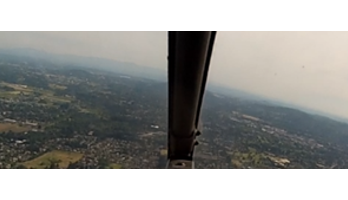This is the twenty sixth training flight in a series following a student through his flight training from day 1 to checkride in an R22.
We continue to develop skills and aeronautical decision making. Some highlights of this lesson:
- Simulated engine failures
- Single-Pilot Resource Management (SRM)
- Risk assessment and risk management
- Steep approach
- Max performance takeoff
- Autorotations
Below the video are time-stamped notes/tips for the flight.
NOTES/TIPS:
00:40 always think about how wind and weight and balance will affect your pickup and taxi direction, especially on windier days
02:45 be ahead of the aircraft when turning to unfavorable wind directions for the tail rotor
03:40 consider mechanical turbulence over buildings on approach/departure
06:30 wind correction angle to maintain a desired ground track
08:00 discussion on wind
09:00 simulated engine failure
10:15 try to keep possible landing spots especially when flying over built up areas or inhospitable terrain and maybe adjust track to be within glide distance
11:20 may have to update track on GPS if off course, by pressing Direct To button again
12:20 practice judging distances
13:25 simulated engine failure – consider pros and cons of roads versus fields
18:35 simulated engine failure – always know where the wind is and so which way you’d turn
20:05 always check NOTAMs (Notice to Airmen) and TFRs (Temporary Flight Restrictions), especially if wildfires nearby
21:00 consider how altitude affects strength of head/tail wind
24:00 steep approach – think how the wind will affect the angle
26:50 air taxi and quick stop
28:40 max performance takeoff discussion
34:40 airports not always good waypoints for cross country planning- use roads, railways, wires, rivers, mountains etc use Google Earth
35:40 keep nose from dropping in engine failure to maintain RPM
37:15 discussion of wind indicators
38:10 simulated engine failure
39:45 simulated engine restart discussion and attempt
44:40 discussion of Single-Pilot Resource Management (SRM)
45:50 make sure weather radio volume is lower than traffic radio
47:40 risk management- feel winds out on a normal approach first and then try autorotation if all feels good
49:15 steep approach
53:10 high entry straight in autorotation
55:30 discussion about not focusing on the RPM gauge, but instead listening and feeling to allow eyes to look outside and watch horizon for attitude changes (which lead to airspeed changes)
56:35 another high entry straight in autorotation
1:00:50 hover autos
1:02:35 practice precise placement of the tail rotor as a game to improve off airport tail rotor safety
To view all the videos in this series, check out this YouTube playlist of all the Flight Training Sessions (Full-Length Unedited)



